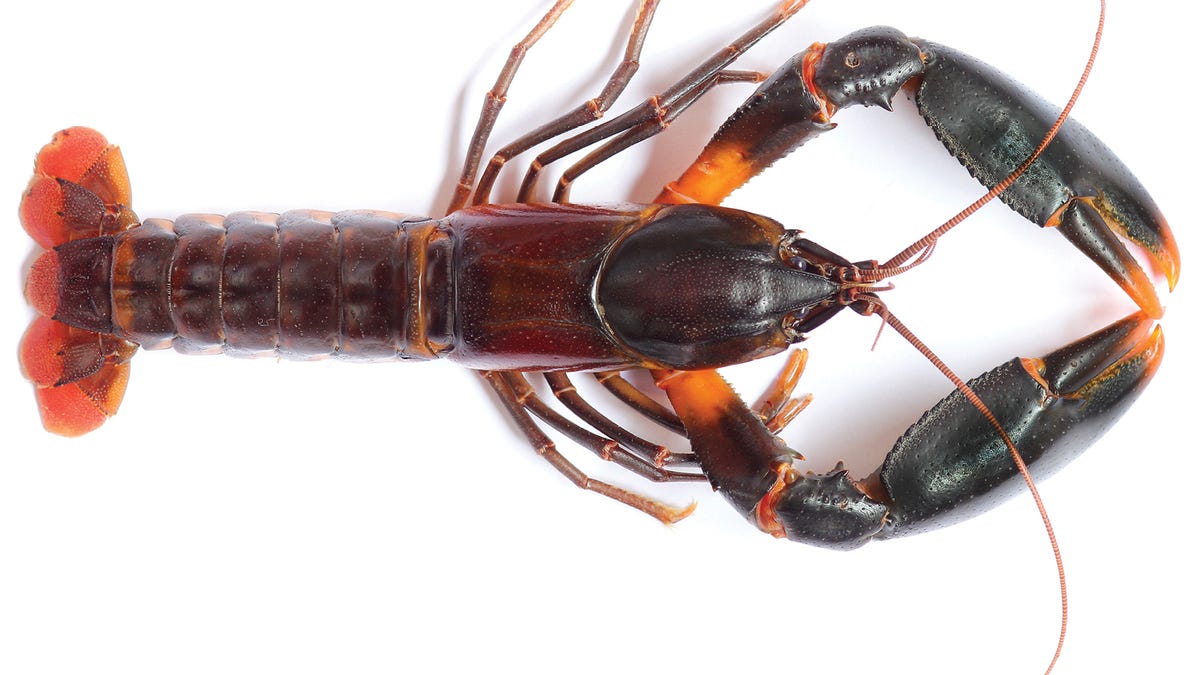What do Edward Snowden and Elton John have in common? Crustaceans
A newly discovered crayfish gets named after the NSA leaker and an amphipod after the singer of "Crocodile Rock." Now whose name are we going to use when we find a new species of crocodile?
There are a few surefire signs you've become a celebrity -- hosting "Saturday Night Live," getting one of your songs parodied by "Weird Al" Yankovic or having your privacy invaded by a TMZ reporter.
However, you're truly an icon if a scientist bestows your name upon a newly discovered species. Edward Snowden, who leaked National Security Agency documents to journalists, and music legend Elton John both received that honor when two separate scientists used their names to classify two new species of crustaceans.
Snowden was the first of the two to have his name used to classify a new crustacean, called Cherax snowden, according to a study published Monday in the journal ZooKeys. Another study published Tuesday in the same journal announced the discovery of a new amphipod called Leucothoe eltoni, named after John.
The first known specimens of the new Cherax snowden crayfish were discovered in 2006 by a collector in Indonesia who kept them for "ornamental purposes" because of their bright orange and "orange green" claw tips. Researchers didn't realize they were an unclassified species of crayfish until April of this year, when they received additional specimens from two retailers that sold freshwater invertebrates and were able to match their DNA to the specimens first acquired in 2006.
Independent researcher Christian Lukhaup, one of the researchers who discovered the crayfish, wrote in the study that he chose Snowden's name for this crustacean so he could honor "his extraordinary achievements in defense of justice and freedom." He also explained to The Washington Post that he felt Snowden was more worthy of such an honor than, say, Justin Bieber or the Sham-Wow guy.
"We have so many species named after other famous people who probably don't do so much for humanity," Lukhaup told the Post. "I wanted to show support for Edward Snowden. I think what he did is something very special."
The amphipod named after John can be found in coral reefs near Indonesia and the Philippines and also near the Hawaiian Islands, possibly when some of them hitched a ride on a US Navy transport from the Philippines to Pearl Harbor in 1992. The amphipod lives inside other reef invertebrates but without damaging its host.
James Darwin Thomas, a professor at the Halmos College of Natural Sciences and Oceanography at Nova Southeastern University in Ft. Lauderdale, Florida, says he had two reasons for using John's name to classify his amphipod.
"I named the species in honor of Sir Elton John because I have listened to his music in my lab during my entire scientific career," Thomas said in a statement released by the scientific journal publisher Pensoft Publishers. "So, when this unusual crustacean with a greatly enlarged appendage appeared under my microscope after a day of collecting, an image of the shoes Elton John wore as the Pinball Wizard came to mind."
Naming a new species of an animal isn't always intended to be an honor. NPR science writer and "Radiolab" host Robert Krulwich wrote a story in 2008 about how animal species get their names and noted that some species were named as a form of criticism, such as the worm species Khruschevia Ridicula named by a scientist who despised the Communist Party and a species of weed, Siegesbeckia, named by famed botanist Carl Linneaus as a way to get back at one of his critics.
There's probably a slime mold or leech species out there named after some scientist's ex.


